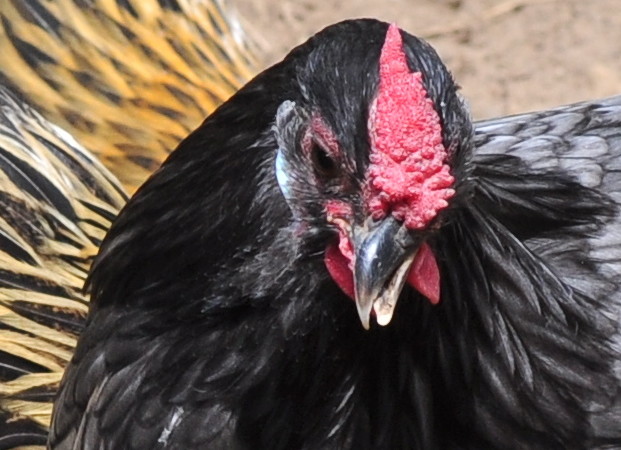

Once in a while, you may come across a chicken with a beak that does not align perfectly. This abnormal alignment is known as Scissor Beak, or Crossed Beak, and is a condition that exists when the top and bottom of a chicken’s beak to not meet as they should. The cause of this could be an inability to properly wear beaks by honing on hard surfaces, injury, or most likely genetics. It may not initially appear upon hatching that a chicken will ultimately have such a problem, but unless it is a result of an injury later in life, Scissor Beak usually becomes evident at a fairly young age.
Scissor Beak can vary in severity from very mild to quite severe. It is not usually a death sentence, however, and can often be managed with proper care. This will require some extra effort on your part, but chances are good that even a chicken with a beak deformity will go on to thrive. The areas in which an affected chicken will need assistance are when it comes to obtaining and consuming food and water. Most affected birds will adapt and be able to eat and drink on their own, but in some cases birds to exist that will need extra special attention.
Since Scissor Beaks don’t function quite the same as a normal beak, the bottom portion is typically used as a scoop for consuming food and water. Because of this, special accommodations may be necessary for feeding and watering which basically amount to giving them easier access. Traditional waterers may be difficult to operate for birds with Scissor Beak due to the spillage of water from the beak as they rise from drinking at ground level, so nipple waterers may be necessary instead.
Since nipple waterers are generally elevated at or near to chest level, it is easier for a Scissor Beak chicken to reach for them and allow the water to drip into their mouths rather than having to move it themselves from ground level to a point where they can swallow. Food can also fall out of the beak, so wetting food to an oatmeal-like consistency helps it stick together and can make it easier for affected chickens to eat. Crushing and/or grinding food before wetting can be helpful as well depending on what works best for your chicken.
One of the other issues you may face with a Scissor Beak is the need to trim it. Since a normal beak is worn naturally by the birds themselves rubbing it on hard objects they encounter in nature, normal beaks don’t need such attention. Keeping a Scissor Beak in shape is not a feat most chickens can accomplish, so you may have to step in. Beak length can be reduced with dog claw clippers, a file, or a dremmel and styptic powder should always be kept on hand when doing so. Do keep in mind that beaks are vascular and can bleed if trimmed too far back. Because of this, beak trimming should only be done by experienced persons and at your own risk. If you have questions about beak trimming and wish to learn to do it on your own, consult a qualified avian vet for advice.
While chicks with Scissor Beak have very good chances of survival with the right amount of human intervention, those chicks should not go on to have chicks of their own. Since Scissor Beak that occurs from birth/a very young age is likely genetic, breeding an affected bird can lead to more affected birds down the line. If Scissor Beak is brought about as the result of an injury, the same cannot be said, but when it is clearly present from birth, it is not wise to take chances with breeding.
The main tactic you should embrace when it comes to Scissor Beak chickens is observation. Through watching, you can tell what works for affected chickens and what needs to change to better their lives and ability to function. Seeing what the problem is and how it might hinder your chicken can lead you to a conclusion that works for that animal.
 Contact Jaguza Support
Contact Jaguza Support